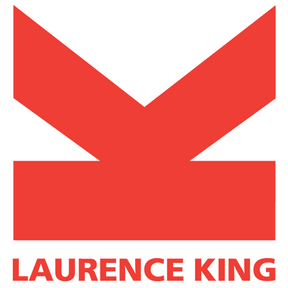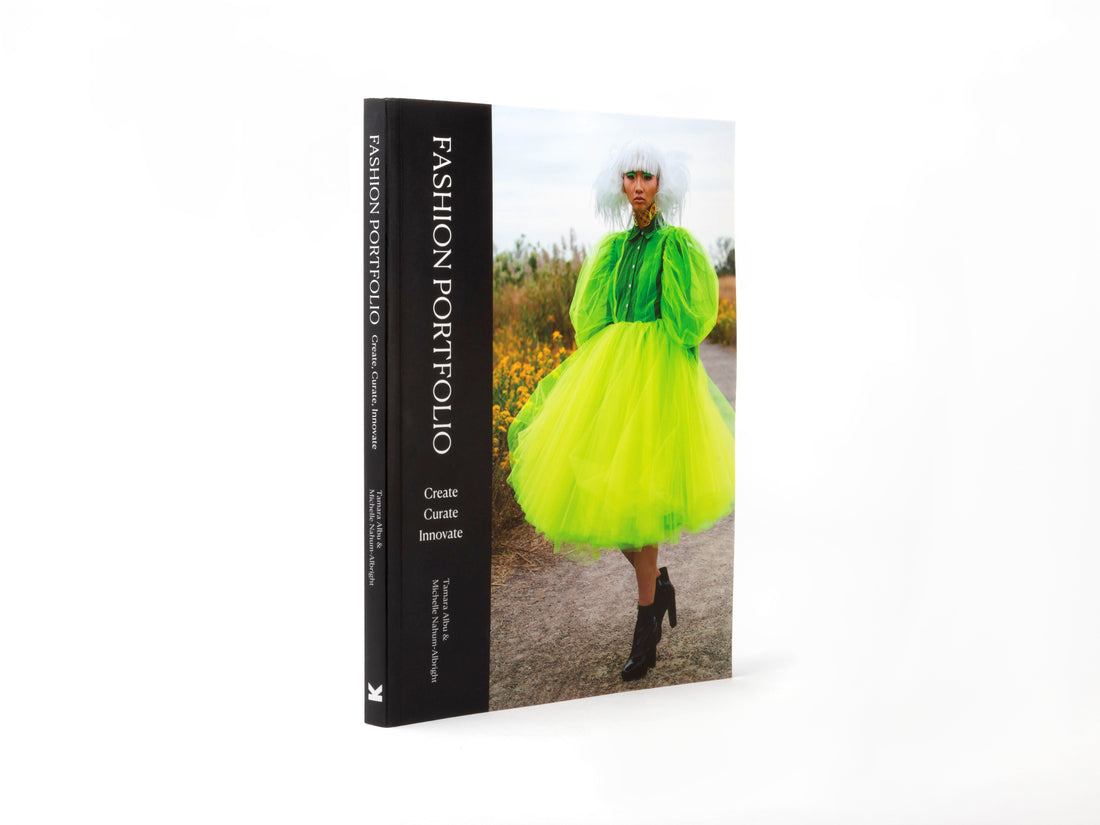Introducing Fashion Portfolio: Create, Curate, Innovate by Tamara Albu and Michelle Nahum-Albright.
This comprehensive guide provides young professionals practical direction in creating a compelling portfolio and brand image. A distinctive portfolio is a strong sales tool, part of an individual career strategy. Emphasizing personalized storytelling, Fashion Portfolio maps a targeted path to represent professional skills and personal potential. It explores research, identity branding, portfolio structure, online presentation & social media, interview techniques and follow up.
Throughout Fashion Portfolio, Albu and Nahum-Albright focus on creativity, inspiration and skills: looking at collection concept, color/ swatch stories, sketches, and technical drawings. Examples of fashion illustration and rendering techniques are exemplified. Strong, curated units unify the overall portfolio, creating a consistent persona. As visual identity meets personal style, a clear unified story and brand emerge.
Readers are guided to build content using various hand and digital rendering techniques, and a wide range of media and photography. Albu and Nahum-Albright provide guidance in creating a consistent visual statement and portfolio working with unit and page layouts.
A two-and-a-half-year labor of love, on every level, Fashion Portfolio: Create, Curate, Innovate, clearly informs and illuminates. It is well organized, attractive, and of course, chock full of great information. There is invaluable career advice for both aspiring fashion professionals and those looking to evolve within the industry.

Q&A: Tamara Albu (T) and Michelle Albright (M)
Can you first give us a brief introduction to who you are and what you teach?
M: After over 20 years as a Creative Director in the beauty industry, working with the management of people & projects, I transitioned to become an educator and author. My years at Elizabeth Arden and Estee Lauder included visual content creation / branding, product / package / display design and production supervision. At Parsons School of Design, I especially enjoy teaching Visual Communication Lab1 - an intensive visual branding primer for fashion marketing and merchandising students. Currently, I also teach concept development for first year students, package design / promotion, and print / packaging production.
T: Most of my current professional activities are focused on art and design research. By maintaining strong domestic and international industry ties, I can introduce students to the latest trend innovations. Lectures and visual demonstrations are always based on professional experience. During my long teaching career, I developed and taught a wide variety of courses. My favorite subjects were always Fashion Portfolio and Fashion Illustration. Over the years, I have been invited to teach and hold workshops around the world. Locations have included France, China, Italy, Spain, India and Saudi Arabia.
In Fashion Portfolio, you discuss the importance of developing a personal brand. What are some ways to develop a personal identity that will stand out in the fashion industry?
M: We suggest a personal inventory as you look to develop a standout identity. An effective personal career strategy is always grounded in maximizing understanding of your own strengths and interests as a designer. This must be reflected in everything including visual identity, collections and social media.
T: I agree with Michelle. I want to add that a ring of authenticity can only be achieved by being totally true to one’s values. While trends come and go, true personal brand identity can only be attained by maintaining a core style consistency over time.
Can you give an example of some designers who have utilized personal storytelling to create a bold, unique brand?
M: Eileen Fisher tells a story that has always been grounded in timeless simplicity and sustainability. Stella McCartney extends her consistent conversation about respect for the earth into material choices. She is one of the initial commercial users of mushroom leather. In all his incarnations Tom Ford speaks about sensuality. His clothing and advertising for Gucci made a clear unified and dynamic statement.
T: In all her work, Iris Van Herpen searches for new means of expression by merging technology with couture craft. Karl Lagerfeld is known for elegant, innovative fashion collections, influenced by the backbone of strong European tradition. Fun and color run through every aspect of Agatha Ruiz de la Prada collections.
What are some ways one can use their portfolio to portray their personal identity?
M: All pages should be consistently laid out and easy to read. Practically this means a personal logo, and unified type choice and usage. The portfolio is a showcase of style vision as well as specific skills. Make sure the display of both is integrated visually and conceptually. Demonstrate your ability to do both practical producible product design and forward reaching new conceptual garments.
T: Considering the questions below might help clarify a student’s direction:
- Name the designers you may identify with.
- List few sources of inspiration you find yourself using more often. Ask yourself why.
- List your favorite general silhouettes: geometrical, fluid, minimal, complex, intricate.
- List your favorite fabrics, colors and details, dark, light, pastel, contrast, muted, solid or prints, darts or folds, pleats or gathers, voluminous or tight.
What are some career paths in the fashion industry readers can learn more about in Fashion Portfolio?
M: Many approaching a career in fashion are aware of design opportunities in womenswear, menswear, children’s wear, perhaps even aware of accessory design but may not be so well informed about careers in patternmaking, styling, public relations, forecasting curation, buying, costume design and journalism
Do you remember what originally inspired you to study fashion?
M: The beauty industry, where I spent a large portion of my career, is a first cousin to fashion. The idea of being able to be part of a conceptual and visual creation aiming to satisfy both emotional desires and aspirational dreams strongly attracted me. Beauty reinforces personal confidence, helping women present themselves to the world with comfort and poise.
T: I love the human body. Whether a model is showing off a garment, or posing for me, I find the human form is endlessly fascinating. The relationship between a draped piece of cloth and the body underneath creates unique expressive shapes.
What excites you most about the future of the fashion industry?
M: Customers want to be truly seen. They have become more adamant about having their very specific needs and desires meet. I am excited by the ability of the fashion industry to more fully serve these consumers.
Customers are not a uniform group in proportion or interests. There are a selection of niche needs and opportunities that are begging for further investigation. Opportunities are available in the development of style statement options for the more ample female figure, as well as petite women. Color options and silhouette exploration need to be further developed for men. It is time for an expansion of clothing that satisfies spiritual and stylistic requirements for reasons of faith or personal preference.
T: The new technologies that are being explored and introduce to all fields including fashion:
Artificial intelligence
AI is gaining a usage in the fashion industry. It is utilized for improving the customers shopping experience, to increase sales by analyzing data, predict trends and much more.
Novel fabrics
One example of Novel fabrics is ColorFab 3D. This technology prints 3D objects with “photochromic inks” that change color when exposed to certain wavelengths of UV light.
Body scanners
As social media dissipates the latest fashion shows almost instantly, the latest trends are expected to become available straightaway. However, customers are also looking to stand out from the crowd. The body scanners will be soon populating all the malls and stores to created unique fitting of garments adapted to customer specifications, color, fabric, added or subtracted details.
3D printers
More and more companies are adopting the 3D printers to explore customization, sustainability, and creativity. Among several sophisticated technologies Iris Van Herpen is using 3D printers to create her unique designs.


